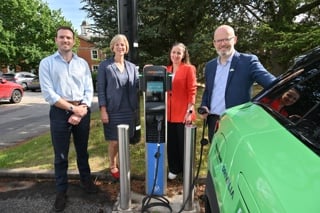It’s difficult to establish exactly how many people climb into their car or van each week and drive with drugs in their system.
An independent report by Sir Peter North in 2009 concluded the problem of drug-driving was “out of all proportion” to official figures, being much higher than statistics suggest.
The problem for the police is it’s difficult to detect and the level of impairment even harder to prove. There is currently no device being used at the roadside in the UK which can detect drug use via saliva, urine or blood sample.
Yet, the Department for Transport (DfT) estimates that one-in-five people killed on our roads may have an impairing drug – legal or illegal – in their system.
Meanwhile, drug driving was cited by police as a “contributory factor” in 1,094 road traffic accidents in 2010, including 51 fatal accidents.
British police are instead armed with five exercises to test suspected drug drivers on their ability to drive, including their ability to walk in a straight line. Suspects who are then arrested can be obliged to be examined by a doctor and to provide a blood test.
The Home Office has trialled new drug screening technology – so-called ‘drugalysers’ - for use in police stations, but has yet to approve specific devices.
Unlike the relative simplicity of alcohol testing, it can be very difficult to test for the toxicity of drug use, particularly if a number of drugs, whether legal or illegal are used.
However, the Government is keen to try and tackle the problem and has announced in the past week that the DfT is establishing an expert panel to consider the scientific case for a new criminal offence of driving with an illegal drug in your body.
“We know how important it is to tackle the menace of drug driving,” said road safety minister Mike Penning. “That is why we are putting together a panel of experts to give us advice on the technical aspects of introducing a new offence of driving with an illegal drug in your body.
“The panel will look at how such an offence could be defined as well as considering whether it is possible to set levels for the impairing effects of specific drugs.”
In Finland and Sweden, zero-tolerance laws for illicit drugs were passed following the experience that the offence of impaired driving was too difficult to prove.
A Northern Ireland Assembly report, dated January, 2010, says that the reliability of devices for roadside saliva testing has yet to be confirmed.
Of the nine on-site saliva-testing devices evaluated by the EU’s Rosita-22 project between 2003 and 2005, not one could be recommended for roadside screening of drivers.
The Association of Chief Police Officers (ACPO) has questioned the reliability of roadside testing equipment, but welcomed the Government initiative.
In the EU, France uses roadside saliva tests, but prosecutions based on the results of a blood test. Similar systems exist in countries like Germany, Finland and Italy, and more than 9,000 motorists have been convicted of drug driving in France since this type of testing was introduced in 2003.
Meanwhile, a system introduced in Victoria, Australia, in 2004, requires drivers to provide a sample of saliva by placing a small absorbent pad on their tongue, which is tested using a roadside device.
If the test returns a positive result, drivers are asked to provide two further saliva samples. One of these samples is given to the driver to keep. The other sample is tested on the spot by police either by using the same or an alternative ‘approved’ device.
If this second test returns a positive result, the saliva sample is sent to a laboratory for further testing and if there’s any trace of an illicit drug, an offence has been committed.
More follows on page two...






















Login to comment
Comments
No comments have been made yet.